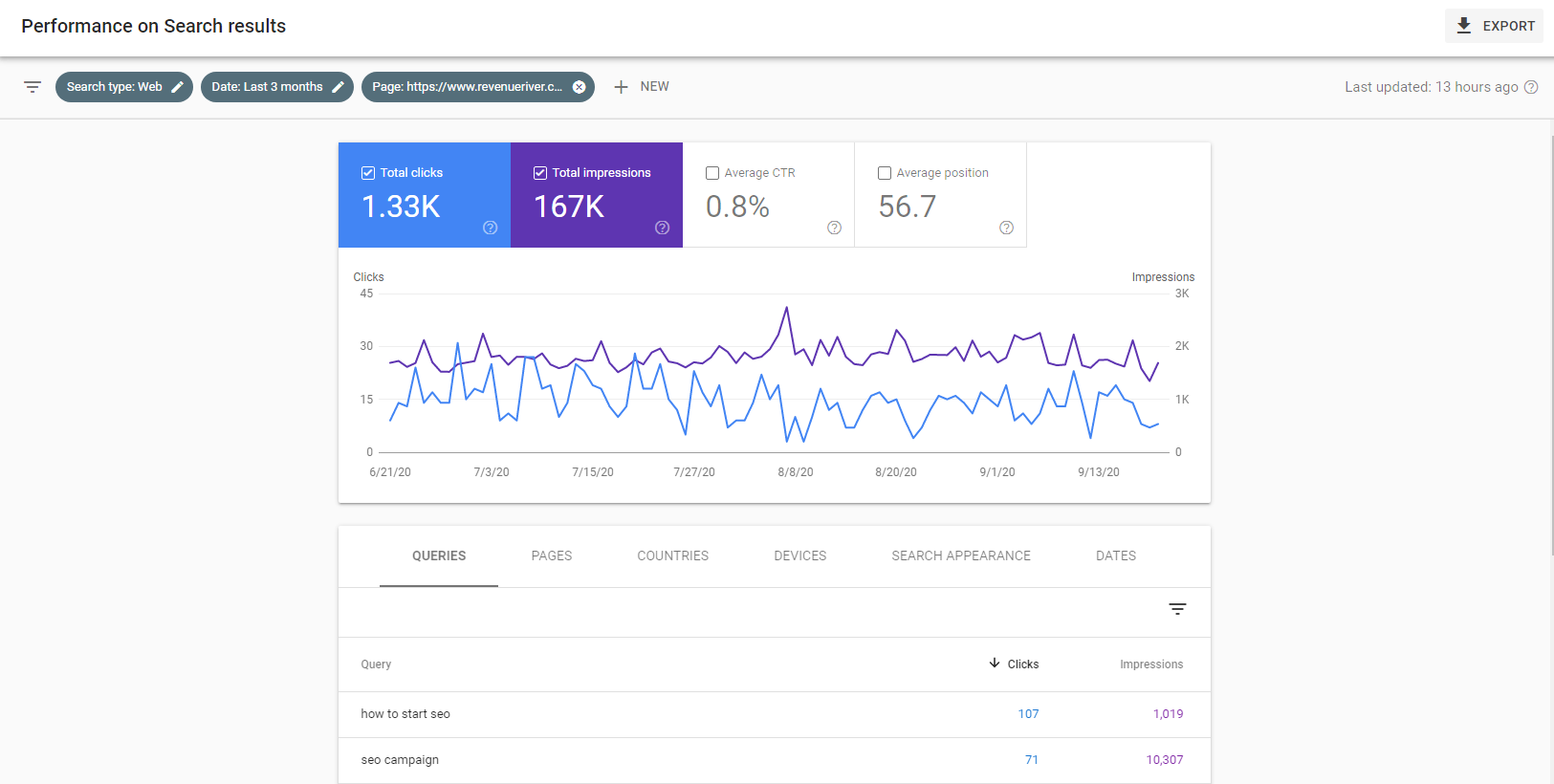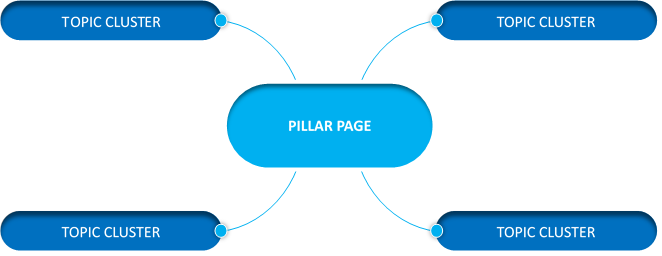Writing quality content benefits your website’s SEO, but it is only half the battle.
Content creators should consider spending at least a quarter of the time they spend writing a piece of content to optimize that content for search results.
Deploying SEO best practices doesn’t have to be a challenge With the right framework, data, and strategic tactics, any blog post can be optimized to better perform in search.
With that in mind, here is a list of tactics I prefer to use when optimizing a blog to perform better in search results.
Table of Contents
Keywords as a Foundation
The modern search engine in 2020 doesn’t need to see your keyword a half dozen times in a blog post to understand you’re talking about how to optimize a blog for SEO and instead pick up on this through context clues.
Search engines these days are incredibly intuitive with natural language processing being a core part of the algorithm. Since launching nearly two years ago, Google’s BERT algorithm update introduced natural language processing into the algorithm. By using a neural network to power this system, Google’s algorithm understands the difference between an Apple phone and an Apple you’d eat for lunch with only the context of the sentence.
To this point, keywords are no longer needed to be sprinkled throughout a blog post to rank for a particular query in search results. While one or two mentions of a keyword can and should be used, writers should think of keywords as a foundational component instead of an extra added to the top.
With that in mind, a great tactic to get the full benefit of keyword research can come after a blog post is live and has had a chance to garnish some rank in search results. Then take a look at your search console account and determine if there are any keyword gaps in your post based upon search queries the post ranks for but does not have a high click-through rate.

Optimizing the Metadata
aHrefs looked at an interesting phenomenon in search where upwards of 75% of all pages ranking on the first page of search results had no meta description expressly written for the page.
With nearly 3 out of 4 pages having their metadata rewritten, how could SEOs justify optimizing metadata for a page? Simply put, it’s still a signal Google is looking at for general SEO best practices, even if the search engine giant decides to rank many pages without it.
With this in mind, metadata optimization shouldn’t be a high priority for your blog content. It can help to improve your page’s click-through rate and this may be a more powerful ranking signal in the future (hint to the upcoming massive 2021 Google algorithm update).
In the meantime, stick to best practices, if and when you have the time to do so for your blog content. This includes writing a title tag to include your blog post’s target keyword and brand mention. For the meta description, this includes having a call to action within the text, including keywords naturally, and a brand mention for the website.
Heading Structure
Google has explicitly confirmed that headings are a strong ranking signal for its algorithm.
With this in mind, use headings to your advantage within the content. They can make for a great outline to your blog - even prior to writing it!
Headings also have the added benefit of providing a better user experience because let’s be honest - few people will want to read your 1,250-word blog post. They want to find an answer to their question quickly and easily which headings can help them navigate the page to do so.
Finally, as an added trick, use a table of contents generator (when your post is long enough) to include these headings a couple of times within the post while still keeping it natural.
Internal Linking

Internal links provide extra context for your blog posts while still keeping users engaged on your website.
This can be a critical component to strong user experience but also should be deployed with consideration for search engines. Since search engines will first need to crawl your website, prior to adding any pages from your site to their library of search results (indexing), this is a critical component to any search optimization strategy.
To this point, there are two main strategies your website can deploy in regard to internal linking.
The first, pioneered by the HubSpot pillar page strategy, aims to create an emphasis on high-priority pages within your website through the use of internal links. For example, if your products page has 100 links pointing to it from throughout your content, then this shows users and search engines that your product page is important. If you have a dozen blog posts discussing different benefits of your product, all pointing back to this product page, that sends the right signal that this page is a priority for your business. For this strategy to be effective, content creators have to pick and choose their internal links strategically because each and every new link added to a post will dilute the authority sent from one page to another.
For larger websites and businesses with a robust service offering, a pillar page may not be the best approach. This is especially true for e-commerce stores which may have thousands, if not millions of product pages. When this is the case, a better strategy would be to include more internal links within a single blog post.
With that in mind, remember that an internal linking strategy can deploy both tactics and still be effective! Websites that choose to go this route should do so strategically and consider which tactic to use depending upon the type of content being created and the type of user visiting the content.
External Links
External links provide webmasters with a double edge sword. On one hand, external links can be a wonderful way to show your site is an authority figure around a specific topic. External links within a blog post show users and search engine bots that you know your stuff from the links within a page to other high authority websites.
With that in mind, external links lead users away from your website, which is not the goal of inbound marketing. So, external links should only be used when they provide real value to users and help to show a website’s authority around a topic.
A great example of an external link would be to an Edu website, government entity, or non-profit organization.
Schema Markup
Just as every bike deserves a bell or whistle, every website deserves a little bit extra to improve SEO performance.
A website’s extra comes in the form of Schema Markup. While normally it’s best to optimize for the user, schema markup provides an excellent example of how optimizing for the algorithm can benefit users in the end.
This is a short code snippet that provides information directly to the search engine’s algorithm. After the proper implementation of schema markup, a website will be more poised to capture featured snippets and other rich search results, which is the point where this code snippet (optimized for the algorithm) starts to benefit end-users.
Image Selection & Alt Text

A picture is worth a thousand words.
This classic saying is true in digital marketing as well. Images provide users a more robust experience with your web content.
Images also can benefit a website’s performance in search engines. With 2 trillion searches completed each year, image searches account for over 20% of these. So, it’s important content creators take into account how they can enhance their blog content with an image.
Another important part of alt text comes from ADA regulations. Ensuring your website complies with ADA regulations was showcased by the landmark Pizza Hut court case on this topic of website accessibility.
So, take the time to add alt text to your images. While doing so, aim to describe the image and only include keywords within your image’s alt text if it’s a natural use of the keyword. This will help your website rank within Google’s image search and also ensure your website is compliant with ADA regulations.
Conclusion
In closing, remember to always optimize for the user! There are a few exceptions to this general rule and keeping the user in mind will almost always be the right path forward for your blog posts.
That being said, optimizing your blog for SEO can have an immense impact on your blog’s performance. Adding a few target keywords within your heading structure, while also leveraging best practices with internal and external links, in addition to the extras that can go into a blog post all help your content perform better than it would otherwise!
